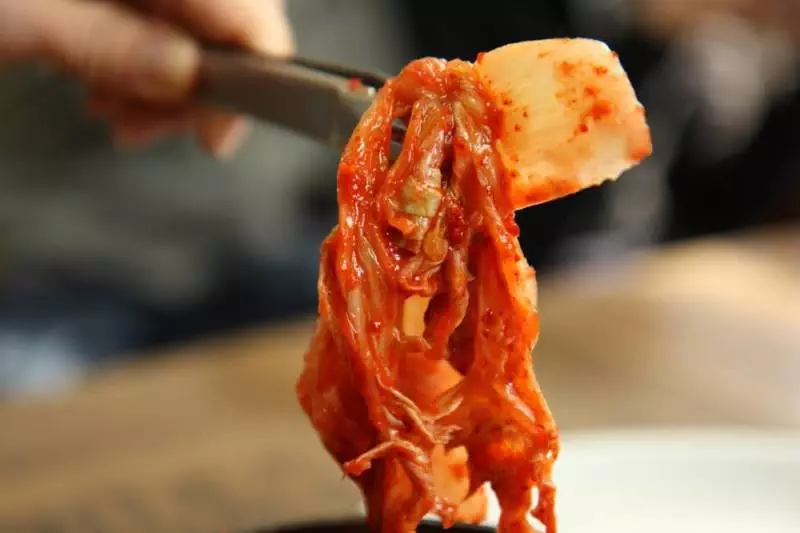
OK, so after almost five months since arrived, I’m slightly ashamed to say I haven’t learned much Korean – at least, not much more than the survival Korean I picked up in my first month or so here. In my defense, however, life is busier than ever, complete with both Korean obligations (like the job that pays my bills and gives me a place to live) and American obligations (like writing a blog for all of you wonderful people!). When not teaching, life is filled with traveling, seeing friends, keeping up with the blog, trying to finish the book I’ve been writing / editing, learning the guitar, singing, dancing, or learning Korean. Anyway, I digress…
Since learning Korean has been on the backburner, I feel a little… intimidated… when going into most Korean restaurants. In most cases when you’re in a non-touristy area, you’ll see the menus plainly written on the walls – but entirely in Korean without a word of English to be found. If you’re dating a Korean who can read and translate the menu for you then you’re golden; if not, you can read the hangul (the Korean alphabet) and try to guess, or just play ‘eeny meeny miny mo’ with something in your price range.
If you find yourself wanting some cheap eats, but still want Korean food, gimbap / kimbap is a natural choice. Think sushi, but less pretentious, and a lot cheaper. Like sushi, there’s lots of choices and lots of price ranges, but it helps that most gimbap places start around 1,000 won for their cheapest roll of seaweed and rice. What makes the other 80,000 varieties more expensive is the special stuff in the middle – it’s seemingly the same seaweed wrap and rice that comprises the majority of the food you’ll eventually digest, but the special stuff in the middle is what will give it a different taste.
I owe a great deal of thanks to Mary Eats, a wonderful blog about eating in general. This post from 2006 details many of the standard varieties of kimbap you’re likely to find while traveling around Korea. Offering English translations of the otherwise entirely Korean menu and telling you what exactly that special stuff in the middle qualifies this blog post as one worth printing and hanging onto.
Of course, one does not live on gimbap alone. There’s always galbi, a food that has become my personal favorite. While galbi is actually beef ribs, the general style of cooking is what’s nice – a server brings you meat to cook on the charcoal-heated metal plate in the center of your table. There are many varieties of galbi, but they’re simply different kinds of meat cooked on the same place on your table.
Anytime you go to a Korean restaurant, you’ll find quite a few side dishes filling the table. The more expensive the place, the more side dishes – at least that seems to be the correlation I’ve discovered thus far. The vast majority of these sides would please a vegeterian, as most of them are either cooked veggies or vegetarian-friendly. I can’t put any names to things yet, but one of the fun parts of eating out is seeing something you’ve seen before and knowing what it is or how it tastes, even if you haven’t caught the name to it. Over time, I’ve found myself recognizing things and remembering them as being spicy, sweet, sour, bitter, etc.
There’s plenty more Korean food out there to try – it’s just a matter of how adventuresome you want to be. According to the Lonely Planet guidebook for South Korea, other items on some restaurant’s menus may include dog meat soup (bosintang), silkworm larvae (beondegi), and let’s not forget about fried grasshoppers (mettugi). These aren’t exactly items you’ll see at every restaurant, and dog meat was banned ahead of Seoul’s Summer Olympics in 1988, and has occasionally come up as an issue since then.
I may not be trying anything that could appear on a show of Fear Factor, but I will be expanding my palate of food knowledge – and taking notes along the way.



me gustaría conocer seoul
:]
http://hsong.egloos.com/1941085
You should try Hadong-wan’s famous gomtang, the soul food of Korea.
-Gomtang lover
I guess one of the first things was to learn what you don’t want to eat. Then learn the names of the things you like. At least dog, grasshopper or larva won’t surprise your plate!
I’m Korean but I didn’t know we eat grasshoppers…
Hmm…on second thought, I did hear in the olden days country kids used to barbecue grasshopper hindlegs as a snack…
http://yaplog.jp/2006namiaicamp/daily/200607/24/
I know the Japanese do, as in the link above, but unlike the Japanese Koreans would never eat grasshoppers as a pan-chan (side dish) to steamed rice. The image of crushed insect parts mingled with sticky rice inside your mouth…Yicky. (sorry)
Kentuckians eat squirrel brains… Different places, different customs.
Don’t forget live octopus… you know, when they cut it up, but its still fighting for its life as you put it in your mouth. That was actually my first meal here, but then again, I knew what I was getting myself into too… Wish I knew how to say THAT in Korean…
Conrad – I actually lived in Kentucky (went to Berea College, lived in Lexington) for almost 8 years altogether – I had never heard of squirrel brains… But then again anything’s possible… Andrew Zimmern – the guy from ‘Bizarre Foods’ on the Discovery or Travel Channel – might be interested in trying them sometime 🙂
Jo-Anna – WOW you were brave… it may take a little alcohol or a significant bet / dare to match your feat 🙂
It’s been interesting trying the foods here… and regardless what I end up actually ordering, I’m usually pleasantly surprised. At least, I have yet to be disappointed.
http://weeklywire.com/ww/
09-22-97/
nash_ol-helter_shelter.html
http://www.greysquirrel.net/
brain.html
Well.. 😉
Hey Chris thanks for props! If you find yourself in Kyobo there are a couple fantastic Korean food books that are lifesavers!